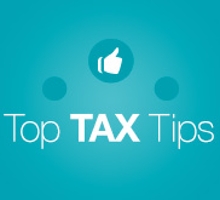The Changing Tax Treatment of Defined Contribution Pensions
 During the Budget Chancellor of the Exchequer George Osborne laid out plans to “completely change the tax treatment of defined contribution pensions to bring it into line with the modern world,” by legislating to remove the remaining restrictions on how and when pensioners can access their savings.
During the Budget Chancellor of the Exchequer George Osborne laid out plans to “completely change the tax treatment of defined contribution pensions to bring it into line with the modern world,” by legislating to remove the remaining restrictions on how and when pensioners can access their savings.
Speaking on these new measures, Mr Osborne — who claimed that over thirteen million people across the UK have defined contribution schemes — said that these measures would amount to a radical change, though they’re just a small step in the direction of a fundamental reform of the taxation of defined contribution pensions. The Chancellor was quick, however, in pointing out that these changes will not apply for defined benefit pensions, though there will be consequential implications on which the government will consult shortly.
Rejecting what he called a “patronising view that pensioners can’t be trusted with their own pension pots,” the Chancellor insisted that individuals who have worked hard and saved hard all their lives should be trusted with their own finances by default.
Proposing what he claimed to be “the most far-reaching reform to the taxation of pensions since the regime was introduced in 1921,” George Osborne introduced the following changes during Budget 2014, all of which took effect on 27 March 2014:
It’s No Longer a Requirement to Purchase an Annuity
The new measures (outlined below) make it no longer a requirement to purchase an annuity, a point the Chancellor was quick to stress several times during his speech. If you’re still attracted to the certainty of an annuity, the ability to shop around for the best available deal will be made available to you via…
Free, Impartial, Face-to-Face Advice
When you retire on defined contribution pensions you will, by law, be offered free, impartial, face-to-face advice on how to get the most from the choices you have at this time, with the Chancellor pledging to provide £20 million over the next couple of years to develop this advice offering.
Guaranteed Income for Accessing Flexible Drawdown Reduced
Reducing from £20,000 to £12,000 per annum, the amount of guaranteed income needed in retirement in order to access flexible drawdown has been almost halved.
Maximum Withdrawals Increased to 150% of an Equivalent Annuity
The maximum amount of money that can be taken out under a capped drawdown arrangement has been increased from 120 percent of an equivalent annuity to 150 percent.
Lump Sum Pension Pot Withdrawals Increased Five-Fold
Prior to 27 March 2014, pension pots of less than £2,000 could be taken as a lump sum. Now, this lump sum withdrawal limit has been increased five-fold to £10,000, while the number of pension pots any individual can access as a lump sum has been upped from two to three.
Total Lump Sum Withdrawals Increase to £30,000
To correlate with the number of pension pots you can access as a lump sum increasing from two to three, the total figure of pension savings you can take out as a lump sum has been increased from £18,000 to £30,000.
Dedicated Advice on Defined Contribution Pensions
To speak with a dedicated professional to discuss the new tax treatment of defined contribution pensions, and what it means for your savings, contact us today on 020 8780 2349 or get in touch with us via our contact page to arrange a complimentary, no obligation meeting.
This blog is a general summary. It should not replace professional advice tailored to your specific circumstance.
The New Pensioner Bond Explained
 Come January 2015, a new Pensioner Bond is set to be launched by the government, issued by National Savings and Investments, that will be accessible to everyone aged sixty-five and over.
Come January 2015, a new Pensioner Bond is set to be launched by the government, issued by National Savings and Investments, that will be accessible to everyone aged sixty-five and over.
The new Pensioner Bond has been designed to help out the many pensioners across the country who have seen their incomes fall dramatically as an unintended consequence of the continued low-interest rates enforced over the last few years, in a bid to support the economy.
Though Chancellor of the Exchequer George Osborne noted that the new Pensioner Bond will pay market-leading rates, the exact figures are to be set in the autumn in order to ensure they can secure the best possible rates for pensioners who wish to participate; though Mr Osborne noted during the earlier Budget 2014 that “…our assumption is 2.8% for a one year bond and 4% on a three-year bond — that’s much better than anything equivalent in the market today.”
Read more
The New ISA (NISA)
 Just a few months ago we created a simplified guide to Individual Savings Accounts (ISAs) here at TaxAgility, a guide that sought to help you understand the differences between cash and investment ISAs in just a few short paragraphs.
Just a few months ago we created a simplified guide to Individual Savings Accounts (ISAs) here at TaxAgility, a guide that sought to help you understand the differences between cash and investment ISAs in just a few short paragraphs.
During Chancellor George Osborne's Budget speech, he set forth his plan for cash and investment (share) ISAs to become interchangeable, with each existing adult ISA set to turn into a New ISA (NISA), arguably one of the biggest announcements of Mr Osborne’s fourth and final Budget before next year’s General Election.
Supporting Savers
In what the Chancellor called a bid to dramatically increase “the simplicity, flexibility and generosity of ISAs” for the 24 million UK adults who are currently in possession of one, the New ISA will allow savers to subscribe the full annual tax-free savings limit into a cash account (previously only 50% of this annual limit could be saved in cash, see below), as well as adding a wider range of securities that can be invested within a New ISA; such as certain retails bonds less than five years from maturity.
Designed primarily to support savers, especially those who were previously hitting their annual cash ISA limits on a yearly basis, HMRC predict the economic impact of the introduction of the New ISA to be as follows:
“These measures will reduce income tax on savings for people constrained by the current ISA limits, improving incentives to save and increasing real household disposable incomes. This might feed through to higher consumption or savings in the household sector. There may also be a shift in the savings portfolio composition towards cash deposits.”
NISA Tax-Free Limits
From 1 July 2014 the new, all-inclusive tax-free NISA limits will be increased to £15,000 a year.
Previous to cash and investment ISAs becoming interchangeable, you could only place up to 50% of your annual ISA limit into a cash ISA — a limit which was set at £11,520 for the 2013-14 tax year. The Chancellor’s tax-free NISA increase to £15,000, as of July this year, represents a significant rise (£9,240) in the tax-free amount previous cash-only ISA savers can save each year.
Junior ISA limits have also been raised, though at a much lower percentage, from £3,720 to £4,000. In a policy paper published immediately after Mr Osborne’s 19 March 2014 budget, HMRC claimed that 300,000 children under the age of eighteen currently hold a Junior ISA. An estimated six million children across the UK still hold a Child Trust Fund (CTF), the precursor to Junior ISAs, with the savings from a CTF being able to automatically transfer to a Junior ISA (or an adult ISA, should the child have reached age eighteen by then) from April 2015.
Understanding the New ISA
To speak with a professional to discuss how you can get the most from the New ISA, contact us today on 020 8780 2349 or get in touch with us via our contact page to arrange a complimentary, no obligation meeting.
This blog is a general summary. It should not replace professional advice tailored to your specific circumstance.
HMRC’s New Salary Grab: The Facts
 First announced at March’s Budget 2014, the Government’s plans to grant HMRC the power to significantly increase the amount of money it can take from individuals’ pay packets for repayment of debts was picked up by The Daily Mail recently.
First announced at March’s Budget 2014, the Government’s plans to grant HMRC the power to significantly increase the amount of money it can take from individuals’ pay packets for repayment of debts was picked up by The Daily Mail recently.
Though it shouldn’t come as a shock that The Daily Mail would jump on a topic such as this with venom, these changes certainly shouldn’t be ignored if you’re in the higher tax bracket and have been repeatedly disregarding communications from HMRC.
Read more
Increase in National Minimum Wage (NMW)
 Yesterday Business Secretary Vince Cable announced an above-inflation increase in National Minimum Wage (NMW) rate per hour from £6.31 to £6.50.
Yesterday Business Secretary Vince Cable announced an above-inflation increase in National Minimum Wage (NMW) rate per hour from £6.31 to £6.50.
Coming into force across the UK on 1 October 2014, the first above-inflation rise (a real-terms cash increase) since 2008 is thought to have had a helping hand from the recommendations and influence of the independent Low Pay Commission (LPC), which earlier this year called upon Mr. Cable to bring in affordable rate rises to help the more than one million lowest-paid workers across the country with their basic, everyday expenses.
Read more
Tax Tips and News for October 2014
This issue … Creating Extra Cash-flow, Understanding the CIS, VAT on International Services, Scottish Taxes, October Questions and Answers, October Key Tax Dates
Creating Extra Cash-flow
Could your creative company benefit from a boost to its cash flow? If it produces computer games, films, high-end TV or animation programmes, it may qualify for a new payable tax credit.
All of these products can qualify for extra tax relief if they can be certified as culturally British, and at least a quarter of the core production costs are incurred in the UK. There are some other conditions:
- only businesses trading as companies can qualify for the tax relief, not individuals or partnerships; and
- the product must be intended for release to, or to be broadcast to the general public, not produced for training or advertising purposes.
High-end TV programmes are essentially quality drama; not news, current affairs or quiz shows. Unfortunately producing original music doesn't qualify as a creative product for these tax reliefs.
There are separate tax relief schemes for the different categories of products, so it is important to look at the detail for your particular sector. However, they all work in broadly the same way: the company can claim an extra 100% deduction for up to 80% of the core production costs. Say the company spends £100,000 in the UK on producing a TV animation programme, if the tax relief applies it would claim an enhanced deduction for those core costs of £180,000.
If your company makes a loss after this deduction, that loss can be surrendered for a payable tax credit. Our tax experts can guide you through the detail of these new tax reliefs.
Understanding the CIS
If you are a contractor in the construction industry it is essential that you deduct the right amount of Construction Industry Scheme (CIS) tax from payments you make to subcontractors.
A common misunderstanding about the CIS is that deductions of CIS tax only have to be made from labour costs. This is not the case, but it may work out like that in practice.
HMRC's instructions are clear, the contractor must deduct the following cost items as listed on the subcontractor's invoice before applying the appropriate rate of CIS tax (20% or 30%) to the net amount:
- VAT charged;
- CITB levy paid;
- materials;
- consumable stores;
- fuel used - except for travelling;
- plant hire; and
- manufacturing or prefabricating materials.
If the contractor does not deduct the right amount of CIS tax they remain liable for that tax to HMRC, unless the contractor can persuade HMRC to demand the CIS tax directly from the subcontractor.
In a recent case the judge was very critical of the company directors and internal accountant for not taking the trouble to read the CIS regulations and taking care to apply them. This is a bit harsh, as the regulations are not easy to understand. However, you should at least make sure that anyone who operates the CIS within your company reads the guidance concerning CIS on the HMRC website. If you are unsure about any aspect of the CIS ask us for clarification.
VAT on International Services
When you sell services to businesses in other countries, the sale will generally be outside the scope of UK VAT. You don't charge VAT on your invoice, but you need to report the value of that sale as part of the total in box 6 on your VAT return. There are exceptions to this general rule for services connected to land, live performances, catering or passenger transport.
If the sale is to a VAT registered business in another EU country the sale must also be reported on your EC Sales list. If your customer is not a business, or is not VAT registered, the sale should not be included on the EC sales list. However, from 2015 sales of various electronic services, broadcasting or telecoms to non-business customers could affect your liability to register for VAT in the customer's country.
If your customer is located outside of the EU, you don't report the sale on the EC sales list, but the value of the sale must still be added to the total to be declared in box 6 on your VAT return.
These distinctions are easy to get wrong, so do ask us if you have any doubts about how to report international sales.
Scottish Taxes
The Scottish people have spoken and the majority have decided they want Scotland to remain part of the UK. However, that doesn't mean everything will remain the same. We already know there will be two new taxes in Scotland from 1 April 2015, and a variation to income tax rates for Scottish taxpayers from 6 April 2016.
If you are planning to buy land or buildings in Scotland, you should be aware that the tax you will pay on top of the purchase price is currently uncertain for completion dates on or after 1 April 2015. This is because Stamp Duty Land Tax (SDLT) will be replaced by Land and Buildings Transaction Tax (LBTT) for sales of land and buildings in Scotland from that date.
The LBTT will have different rules to the SDLT, which will continue to apply to land transactions in England, Wales and Northern Ireland. For example, LBTT will have a nil rate band as well as at least two other bands, but probably different bands and rates for residential and non-residential property. The rates and thresholds for the new LBTT are expected to be revealed as part of the Scottish Government's budget in October 2014.
The other new tax from 1 April 2015 is a Scottish replacement for landfill tax. The rates and thresholds for the Scottish landfill tax will also be announced as part of the Scottish Government's Budget for 2015/16 in October 2014.
From 6 April 2016 the Scottish Government will be able to replace 10p out of each tax band with the Scottish Rate of Income Tax (SRIT). This will apply to all individuals resident in Scotland including pensioners, who fall into a new definition of "Scottish taxpayer". However, the SRIT will have to apply within the tax bands imposed by the UK Government, and the personal allowances will not change.
As currently agreed (and this could change following negotiation for further powers) the rate of the SRIT must be the same for all the tax bands. For example, if the SRIT is set at 10p, the total tax rates will remain where they currently stand for the whole of the UK: 20%, 40%, and 45%. If the SRIT is set at say 15p, Scottish taxpayers will pay income tax at 25%, 45% and 50%.
A new tax authority: Revenue Scotland, has been set up to administer the new Scottish taxes, and any other devolved taxes that may follow. Income tax, including SRIT, will continue to be administered by HMRC.
October Questions and Answers
Q. My consulting company holds a significant amount of cash and I would like it to buy a piece of artwork as an investment, what are the tax implications?
A. If the artwork is kept at your home there will be a taxable benefit in kind, which needs to be declared on the annual form P11D.
Say the artwork cost £30,000:
You will pay income tax on 20% x £30,000 = £6,000 at your marginal rate, each year. The company must also pay class 1A NICs of 13.8% x £6,000 = £828 per year.
If the artwork is to be kept in a bank vault as a pure investment, there won't be a benefit in kind charge for you. However, the business must pay the insurance and storage costs, for which there will be no tax deduction. There is also no tax deduction for the cost of buying the artwork as it is not an item used for the business.
If the company closes, any creditors will be able to access the value of that art, just as if it was cash. If the business is solvent when it closes holding significant investments, it may not qualify for entrepreneurs' relief, which would otherwise reduce the tax you pay on any gain made on the liquidated asset of the company down to 10%.
Q. I am currently aged 57 and while I have been out of the country, I have paid voluntary national insurance contributions to allow me to qualify for the state pension. I recently asked the Pensions Service whether I need to carry on paying voluntary NICs but I'm very confused about the answer. Do I need 10, 30 or 35 qualifying years, to get the full state pension?
A. The rules for qualifying for the State Pension will change for anyone who reaches state pension age after 5 April 2016, so that includes you. A person currently needs 30 years of NICs to achieve full entitlement to the state pension, but that is to increase to 35 years for people who reach state pension age from April 2016. You will need a minimum of 10 qualifying years to get any of the new state pension, which will be paid at a flat rate.
Q. How can I easily calculate a total amount to claim for the self-employed business I run from my home, for example, the total amount of usage for rent, gas, insurance, council tax, internet usage and broadband?
A. There is an easy way to calculate the deductible amount of your home expenses, you simply record how many hours you work at home each month and claim the appropriate flat rate:
- Working 25 to 50 hours at home allows a £10 claim for the month
- Working 51 to 100 hours at home allows a £18 claim for the month
- Working 101 or more hours at home allows a £26 claim for the month
This rate covers the cost of power, telephone, internet access, but it doesn't cover council tax, insurance, rent or mortgage interest. Those other costs should be apportioned according to the space you use for your business in the property, and how many hours you use that space. We can help you with the calculation.
October Key Tax Dates
1 - Due date for payment of Corporation Tax for the year ended 31 December 2013
5 - If a Tax Return has not been received, individuals and trustees must notify HMRC of new sources of income and chargeability in 2013/14
14 - Return and payment of CT61 tax due for quarter to 30 September 2014
19 - Tax and Class 1B national insurance due on PAYE settlements for 2013/14
19/22 - PAYE/NIC, student loan and CIS deductions due for month to 5/10/2014 or quarter 2 of 2014/15 for small employers
31 - Deadline for 2013/14 self-assessment paper returns to be filed for HMRC to do the tax calculation. If a paper return is being filed also the deadline for tax underpaid to be collected by adjustment to your 2015/16 PAYE code (for underpayments of up to £3000 only)
We are committed to ensuring none of our clients pay a penny more in tax than is necessary and they receive useful tax and business advice and support throughout the year.
If you need further assistance just let us know – we're here to help!
Contact us today on 020 8780 2349 to discuss how any of the above affects your personal or business finances or get in touch with us via our contact page to arrange a complimentary, no-obligation meeting.
This blog is a general summary. It should not replace professional advice tailored to your specific circumstance.






